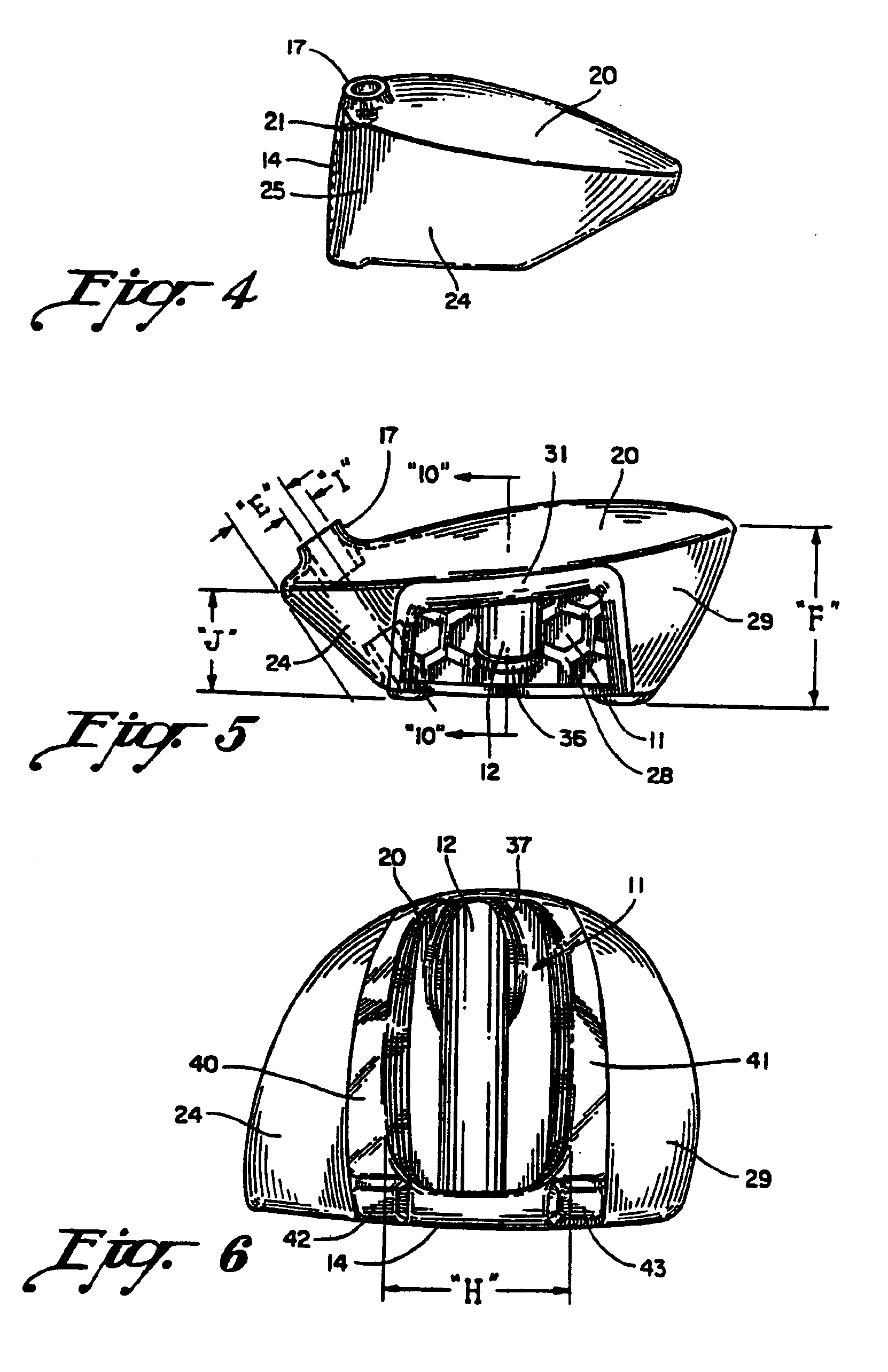Oversize metal wood with power shaft
a metal wood and power shaft technology, applied in the field of oversize metal wood with power shafts, can solve the problems of heat distortion of the face wall and rear clubhead, failure to achieve the effect of distributing more energy to the ball, and increasing the distance of the ball
- Summary
- Abstract
- Description
- Claims
- Application Information
AI Technical Summary
Benefits of technology
Problems solved by technology
Method used
Image
Examples
Embodiment Construction
[0103]Referring to the drawings and particularly FIGS. 1 to 8, a clubhead 10 is illustrated which takes the general configuration of what is termed a “metal wood” in the golf industry, and as seen in FIG. 1, is implanted with a shaft 12 shown only in fragmented form which carries at its upper end a conventional grip. A golf club as defined in the present invention includes a clubhead with shaft 12 fixed therein which carries the shown grip at its upper distal end.
[0104]Many of the views in the present drawings including FIGS. 2, 3, 4, 5, 6, 7, 8, 9, 10, 11, 14, 15, 16, 17, and 18 are shown approximately to scale and in fact are about 5 to 10% smaller than a 1—1 scale.
[0105]The clubhead 10 has an included volume of 260 cm.3, but could range from 230 to 300 cm.3. “Included” volume is defined as the volume encompassed to the outermost walls of the clubhead that includes recessed areas that are not actually enclosed by walls such as a bottom wall cavity.
[0106]The clubhead 10 is construc...
PUM
 Login to View More
Login to View More Abstract
Description
Claims
Application Information
 Login to View More
Login to View More - R&D
- Intellectual Property
- Life Sciences
- Materials
- Tech Scout
- Unparalleled Data Quality
- Higher Quality Content
- 60% Fewer Hallucinations
Browse by: Latest US Patents, China's latest patents, Technical Efficacy Thesaurus, Application Domain, Technology Topic, Popular Technical Reports.
© 2025 PatSnap. All rights reserved.Legal|Privacy policy|Modern Slavery Act Transparency Statement|Sitemap|About US| Contact US: help@patsnap.com



